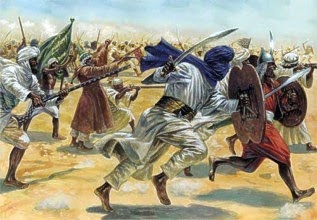Formation of All India Muslim League by taimoor sodhar
forming a political association.
The annual session of All India Muslim Educational Conference was held in 1906 at Dacca. The prominent Muslim leaders from all over the country were attending this meeting. When the meeting ended, Nawab Saleem Ullah Khan of Dacca, convened a meeting of the Muslim leaders at his residence. The objective of this meeting was to discuss the possibilities of forming a political association for the Muslims. The meeting was presided by Nawab Viqar-ul-Malik on 30th December 1906. Nawab Saleem Ullah of Dacca had already circulated an idea of the political organization known as All India Muslim Confederacy. Nawab Viqar-ul-Mailk in his presidential address stressed the need for a political platform for the Muslims. He said that Congress political activities were highly injurious for the Muslims for which Sir Syed Ahmed Khan had asked the Muslims to keep away from the Congress politics. He said the Muslims form only one-fourth of the total population of India. It is obvious that if the British leave the country at any time, the Muslims will come under the domination of that nation which is four times bigger than the Muslims. The other participants also expressed their views in favour of forming a political organization for the Muslims.
Nawab Saleem Ullah Khan of Dacca, therefore, proposed Muslim League which was supported by Hakim Ajmal Khan, Maulana Zafar Ali Khan and other participants.
Nawab Mohsin-ul-Malik and Nawab Viqar-ul-Malik were elected provisionally as Joint Secretaries of the Muslim League. A Committee consisting of sixty members was set up to draft the constitution of the Muslim League. The Constitution Committee included all the members of Simla Deputation. Maulana Muhammad Ali Jauhar, a distinguished student of Aligarh and Oxford, was given the responsibility of drafting the rules and regulations of the League.
The first regular session of the Muslim League was held at Karachi on 29th and 30th December, 1907exactly after one year of its formation. Sir Adamjee Pirbhai, a prominent leader of Bombay, presided over this session. The draft Constitution prepared by the committee was placed before the session for approval. The Constitution was adopted after a further scrutiny by the members of the Constitution Committee present at Karachi session.
The Karachi session of the League was adjourned after adopting the Constitution. The session resumed after a few months and met again on 18th March, 1908 at Aligarh. Agha Khan was formally elected as the President and Major Hassan Bilgrami as the Secretary.
London Branch: May 1908
Justice Amir Ali Syed organized a branch of Muslim League at London and responded effectively to the misunderstandings and conspiracies of the Hindus against the Muslims.
Objectives and Goals of Muslim League
The purposes and objectives of the Muslim League were as follow:
1. Protection and promotion of political rights and interests of the Muslims.
2. Cooperation with other communities without prejudice to the above goal.
3. Fostering sense of loyalty, among the Muslims, towards the government.
Change in the Goals of the Muslim League 1913
The Muslim League with its establishment became active for the protection of the Muslim interests. It took over the Muslim struggle launched by Sir Syed Ahmed Khan and was successful in securing a number of demands from the Government for the Muslims. The most important demand was the separate electorate, which the Government at last conceded in the Minto-Morley Reforms of 1909. The acceptance of separate electorate was the first step by the Government taken towards the establishment of self-rule in India.
In spite of some early successes the Muslim League could not assume that political importance and significance which All Indian Congress had achieved. The Government too, was not very considerate and sympathetic towards Muslim League as it was towards Congress.
Some important developments occurred during the first decades of the 20th century like annulment of the Partition of Bengal and Western aggression towards Muslim countries, Balkan wars, Libya-Italy war, Demolition of the mosque in Kawnpur (1913), etc. weakened Muslim faith in the British. This led to a major drift in the Muslim League’s policy. In 1913, the League changed its goals:
· Self government under the British Crown keeping in view the peculiar conditions in India.
· Good relations with other communities’ cooperation with any party working for similar goals.
This change brought the Muslim League and Congress closer. In this way the era of cooperation between Hindus and Muslims set in. The role of the Quaid-i-Azam is highly noteworthy to bring the Congress and the Muslim League to the table. He joined the Muslim League in 1913.
 |
| sir AGHA KHAN iii |






Comments
Post a Comment